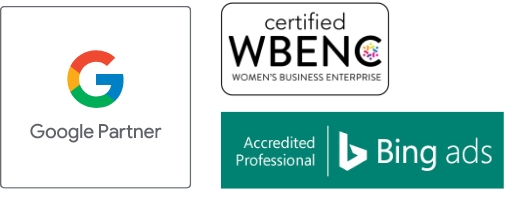
Driving Success With Insurance Landing Pages: 8 Proven Techniques for Higher Conversions
Insurance consumers are becoming increasingly savvy in their searches for providers and programs that can meet their needs for insurance coverage and financial protection. They don’t want to spend lots of time sifting through all the services your insurance company or agency offers. They want to know – fast – if you have what they need and exactly how to access it.
To increase conversions, insurance marketers need to ensure that their landing pages are specific in the content they offer and designed to provide an exceptional user experience. Here are some helpful tips for creating landing pages that entice current and prospective customers and support your overall insurance marketing goals.
8 STRATEGIES FOR BUILDING BETTER INSURANCE LANDING PAGES
Each landing page should support a promotional objective: get the reader to click through to learn more about the insurance services you offer, provide some personal information, and get a quote. Consider the tips below when you’re building your next landing page to ensure that it gives visitors the answers they’re looking for, is user-friendly, and drives traffic in the right direction.
- Dedicate each page to a specific service and goal: Promoting your auto insurance program that provides comprehensive coverage for accidents and damages? Trying to attract new customers who need life insurance? Focusing each landing page on a particular campaign will help you reach the right audience and monitor campaign effectiveness. Directing visitors to complete a single goal, like requesting a quote or providing personal information, will also drive conversions.
- Lead with your value propositions: If you don’t grab a reader’s attention right away, there’s a good chance they’ll look elsewhere. Communicate the value you’re offering with a crisp, punchy headline. Use your subhead or a brief introductory paragraph to explain what you are offering, who it is for, and why it is unique, is useful, or addresses the specific insurance needs of page visitors. Follow up with bullets (or eye-catching icons) and the most important benefits of your insurance program or coverage.
- Clearly communicate how you can improve your audience’s lives: Insurance consumers want to know how what you’re offering will improve their financial situation or provide them with peace of mind. Mention benefits first. So, instead of features (like reliable protection), spell out that your coverage ensures they are protected in case of accidents or damages or that coverage offers financial security and protection for their loved ones’ futures.
- Include simple, compelling copy and calls to action: Keep sentences short and to the point. Avoid insurance jargon. Write in a conversational style, in the way you would talk to a potential customer if you were meeting face to face. Be straightforward and empathetic to the readers’ possible concerns or situations. And make your calls-to-action clear – “Request a Quote,” “See Policies,” or “Get Claims Information,” highlighted as clearly defined buttons or with eye-catching colors.
- Tell your story with visuals: Use images that meet your brand standards and reflect the audience you’re trying to capture – business owners securing their enterprises, homeowners protecting their property, or individuals planning for retirement. Add standout stats in visually interesting formats – like “95% of our customers are satisfied with their claims experience” or “Our insurance coverage has saved policyholders over $1 million in medical expenses.”
- Enlist customers to sell your insurance service: Endorsements and testimonials from satisfied customers who have directly benefitted from your insurance coverage or claims process can mean the most to insurance consumers trying to choose where to turn for their needs. Include video testimonials, quotes, photos, spotlight stories, and surveys to boost prospects’ confidence in your offerings.
- Stick to a streamlined design that’s also mobile-friendly: Use your brand colors and logos, but otherwise, stick to a clean and simple design that allows your messaging and visuals to stand out. Remember to use a contrasting color or design element for your CTA so it grabs the reader’s attention. Feature awards and badges if they’re relevant to the featured insurance service and they boost your brand’s trustworthiness.
- Test, test, test: Whenever possible, before you officially launch your landing page, A/B test your headlines, content, layout, visuals, and CTAs to see which elements draw the most interest and encourage conversions. Make sure your landing page is also optimized for mobile devices.
LIGHTSTREAM is ready to help craft landing pages that more effectively promote your insurance services and draw customers to you. Contact us today to learn more.
